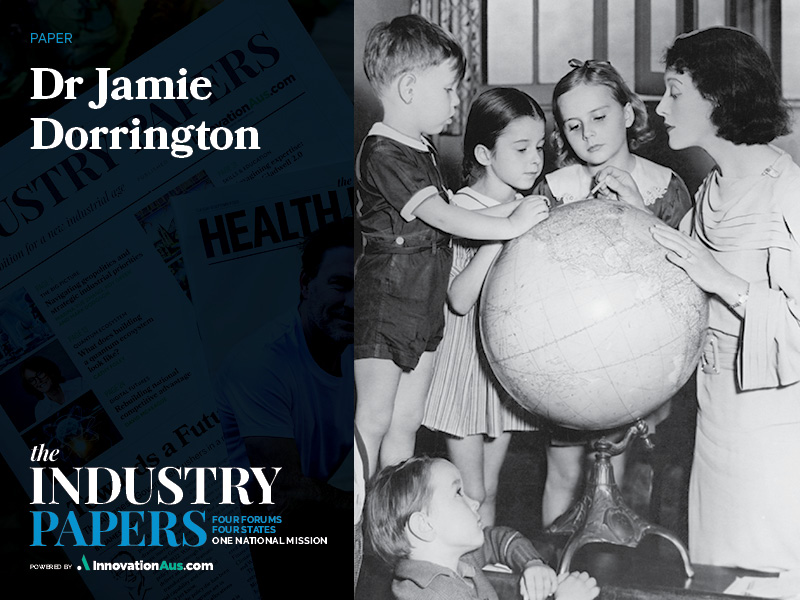I attended school and university under the old social contract; do your best at school, complete your homework, study for exams, get a good final score, go to university, maintain the effort, get a degree, and a well-paid job with good career prospects will be waiting. This chain of life experiences was linked to a particular interpretation of the concept of meritocracy, the idea that effort and talent are rewarded with success. The fact that the plan appeared to work legitimised the traditional approach to schooling, thereby shielding it from criticism. In any case, there were very few other options available. For most people the choice was, and in many places remains, between traditional schooling or no schooling at all.

Today, the relationship between schooling and success, at least as it relates to landing a good job that grows into a career, is less clear-cut. Attending school is not enough, and even those who tick all the traditional boxes (good school, high levels of engagement, and good grades), are facing significant roadblocks to gaining a foothold in the workforce. Unfortunately, the increasing numbers of Year 12 graduates who complete a university degree are finding it is no longer a golden ticket, as evidenced by the Productivity Commission’s observation that “nearly 40 per cent of 30–39-year-olds held a Bachelor’s degree or higher in 2016. Yet university students are increasingly not getting good outcomes from their education.”
Today’s astute employers know that if their business is to succeed it will need to be agile. Seizing new opportunities requires a workforce that is quick and keen to learn and quick and keen to adapt. Unfortunately, relatively few employees fit this profile. There is ample evidence to suggest that the established approach to education at both school and tertiary levels, is not producing graduates with the attributes needed for success in the “age of agility” associated with the fourth industrial revolution (4IR). At the same time, educational technologies are offering opportunities for new, more flexible ways to learn. The rules of the game are changing, raising questions about an education system that has to this point been impervious to changes occurring beyond the school gate.
Schooling has, with the notable exception of shutdowns during the COVID-19 pandemic, been protected from the volatile, uncertain, complex and ambiguous (VUCA) environments challenging many businesses, but it cannot and should not be quarantined much longer. It is time for schooling to refocus its attention on the needs of students who will transition to adulthood in the middle of the twenty-first century. These changes will occur with or without the support of today’s educators.
Tomorrow’s sagacious schools will have three priorities:
- building self-efficacy and resilience through personalisation of the learning experience
- a focus on transferable skills
- encouraging students to gain traction in the world of work
Rapidly emerging, high-quality educational technology enables the delivery of truly personalised education. I am not merely referring to the idea that teachers know and care for their students, but the practice of tailoring the education service to meet the needs of each unique learner. If we expect our graduates to be lifelong learners who can adapt to changes in the VUCA environment, we must strengthen their self-efficacy and resilience. Numerous reports highlight the fact that our current approach to schooling is not truly personalised.
Education Elements, a US-based educational services company owned by Scholarus Learning, has identified four core components of personalised learning:
- flexible path, pace and tools
- data-driven decisions
- targeted instruction
- student reflection and ownership
Personalisation is possible if we combine the skills and motivation of human educators with high quality educational technology and we unshackle ourselves from legacy practices such as supply chains that focus on teachers as the gatekeepers of knowledge, creates subject silos, and the constraints of timetables and summative assessment schedules.
Transferable skills appear in many guises – enterprise skills, soft skills, general capabilities etc. They have been identified as having value across most occupations. The Organisation for Economic Cooperation and Development (OECD), the Review to Achieve Educational Excellence in Australian Schools (Gonski et al.), The Foundation for Young Australians New Work Order Reports, as well as reports by the World Economic Forum, Burning Glass Technologies, the Committee for the Economic Development of Australia (CEDA), the Business Council of Australia, McCrindle Research and others, have called upon educators to focus on equipping youth to meet the challenges and seize the opportunities that await them as the fourth industrial revolution gathers pace. These transferable skills are also aligned with the goals in the 2019 Alice Springs (Mparntwe) Educational Declaration, which sets out the common goals for all Australian schools. Our response? We embed them within subject silos and assume they are being developed even though they are not explicitly targeted or measured.
Finally, students need to gain traction in the world of work well before they graduate. School-based traineeships, apprenticeships, and internships, together with a system that recognises the value of part-time work, help students contextualise their learning and build self confidence and a social network. Apprenticeships and traineeships should not be seen as alterative pathways for students who are “not academic” but as legitimate, integrated learning opportunities for all. Once again, this can only be achieved if we unshackle from timetables that effectively punish students who miss classes to engage in work.
Imagine you are being admitted to hospital. The admissions officer notes your name, date of birth, next of kin, contact details and whether you have any known allergies. They then inform you that you will be leaving at a certain time on a certain date. What if I am not well by then? What if my condition improves quicker? The officer explains that the hospital works by moving you through a series of wards on certain dates and when you leave your final ward you will get a certificate stating that you are ready to experience life beyond the hospital precinct. The same tests will be applied to everyone to confirm that you (and they) are just well enough to move to the next ward.
This does not necessarily mean you are thriving. In fact, your will progress through the system even if you are struggling because someone else is waiting to move into your ward. Different doctors will look after your care at each stage, although the notes they receive from the previous doctor tend to be rather vague and, to be honest, they don’t have the time to focus too much attention on you as an individual. They prefer not to use all the latest technology because they are worried about it replacing them. The proficiency of the medical staff is assumed and only subject to question in the most extreme circumstances.
Of course, we would not allow our medical services to operate in such a manner. We value our health and set high expectations because it impacts on us as individuals, our families, our community, and the economy. The quality of our education is just as impactful. It follows that need to value education the same way and adopt an approach that uses available human and digital tools to ensure every student thrives. Above all, learning should be fixed, and the time and resources required should be variable, not, as it is today, the other way around. We cannot wait any longer for schools to be sagacious.
Dr Jamie Dorrington, B.A.Dip.Ed,. M.A., M.Ed.Admin., M.B.A., Ed.D. is the Deputy Chair and strategic adviser at Caloundra City Private school in Queensland. He has spent forty years as a teacher, head of faculty, head of school and principal in the Northern Territory, NSW and Queensland. He has won numerous academic awards, spoken at a variety of conferences, and published several papers. His strategic plan won the Australian Education Award in 2017.
This article is part of The Industry Papers publication by InnovationAus.com. Order your hard copy here. 36 Papers, 48 Authors, 65,000 words, 72 page tabloid newspaper + 32 page insert magazine.
The Industry Papers is a big undertaking and would not be possible without the assistance of our valued sponsors. InnovationAus.com would like to thank Geoscape Australia, The University of Sydney Faculty of Science, the Semiconductor Sector Service Bureau (S3B), AirTrunk, InnoFocus, ANDHealth, QIMR Berghofer, Advance Queensland and the Queensland Government.
Do you know more? Contact James Riley via Email.

